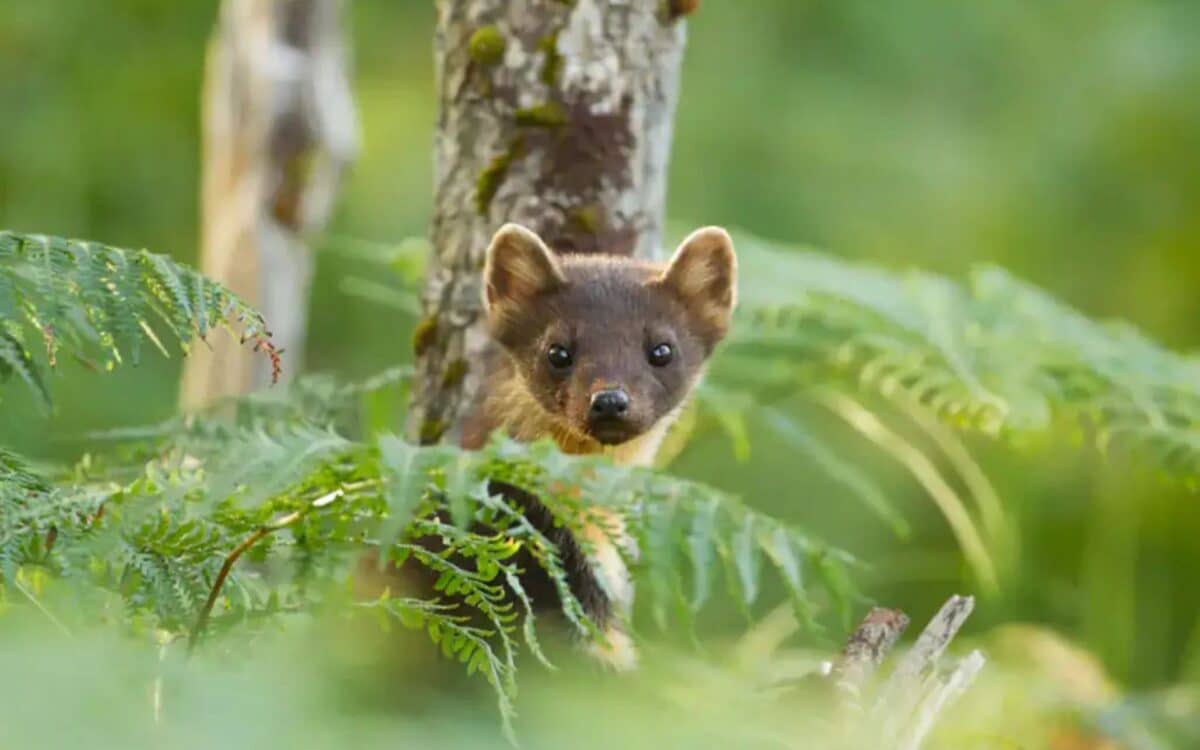The comeback of a once-lost predator is making waves in wildlife conservation, as Britain reintroduces a species long absent from its forests. After over a century, the pine marten—a sleek, nocturnal predator—has been brought back to Exmoor National Park. Nineteen martens, including nine females and ten males, have been released into the area as part of an ambitious rewilding project.
This marks a major milestone in the effort to restore Britain’s ecosystems. According to zmescience, the pine marten’s return is not only a testament to rewilding success but also a key step toward strengthening biodiversity in the region.
Pine Martens: Elusive, Agile, and Vital to the Forest
The pine marten, a member of the Martes genus, is a small but fierce predator related to weasels. Their sleek, chestnut-brown fur and bushy tails are a familiar sight in European forests, though these creatures are often elusive and nocturnal. Pine martens are known for their remarkable climbing skills, navigating through trees with ease and hunting small mammals, birds, and even invasive gray squirrels, which they can outmaneuver with ease.
For centuries, these predators roamed the woodlands of southern Britain. However, due to deforestation, hunting, and loss of habitat, they vanished from many regions by the early 20th century. Their disappearance left a significant void in the forest ecosystem. But now, after years of tireless conservation efforts, these predators are returning to Exmoor, bringing their natural role back into balance.
A Long-Awaited Return: The Two Moors Pine Marten Project
The reintroduction of pine martens to Exmoor is part of the Two Moors Pine Marten Project, a collaborative initiative involving seven organizations, including the Devon Wildlife Trust, the National Trust, the Woodland Trust, and the National Park Authorities of Exmoor and Dartmoor. Funded by the National Lottery Heritage Fund, this project is one of the largest of its kind in the UK.
This is a landmark moment—witnessing the return of pine martens to Exmoor after more than a century is truly inspiring – said Stuart McLeod, director of England – London & South at the National Lottery Heritage Fund.
Reintroducing lost wildlife is essential for building resilient ecosystems.

The nineteen martens, transported from the Scottish Highlands, were carefully acclimatized before being released. This reintroduction is not the first of its kind—just a year ago, 15 pine martens were introduced to Dartmoor, where kits were born this summer. Together, the populations in Exmoor and Dartmoor could eventually form a thriving, self-sustaining group.
Seeing the kits on camera was a huge highlight – Said Jack Hunt, assistant site manager for the Woodland Trust.
The Exmoor release is a chance to build on what we’ve learned and establish a stable and healthy population of this missing species.
The Return of the Pine Marten: A Keystone Species for Ecosystem Health
Pine martens are not just returning predators; they are keystone species, meaning their presence is essential for maintaining the balance of their ecosystem. In Scotland, their resurgence has been linked to a decrease in the population of gray squirrels, which have been responsible for the decline of native red squirrels.
By hunting the invasive gray squirrels, pine martens help red squirrels thrive once again. Additionally, these predators help disperse seeds from the berries they consume, such as bilberries and blackberries, contributing to the regeneration of forest flora.
This is a wonderful moment for Exmoor – said Ali Hawkins, senior ecologist at Exmoor National Park Authority.
Reintroducing pine martens will help bring back a natural balance that will benefit many species.
As the predators settle into their new environment, their presence will ripple through the ecosystem, creating a healthier, more biodiverse forest.
We want to see if there are any patterns in where they are coming – said Ed Parr Ferris, conservation manager for Devon Wildlife Trust.
Then we can look to carry out interventions down the line.
However, the broader goal remains clear: to bring back woodlands that are thriving with diverse wildlife.
Our vision is to see woodlands that are thriving and full of wildlife – said Tracey Hamston, who leads the Two Moors Pine Marten Project.
That’s really important not just for the wildlife, but for people as well.

